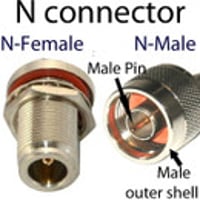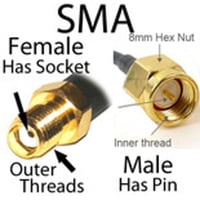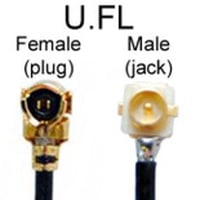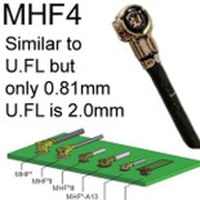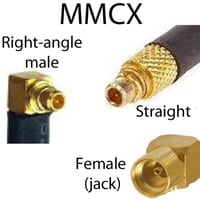N to SMA Cables & Adapters
Type N Connector to SMA Cables for Antennas
Our cable assemblies with Type-N to SMA connectors are made with either LMR-100,-equivalent, LMR-200-equivalent or LMR-400 equivalent coax because these are double-shielded for low signal loss.
We do not use single-shielded coaxial types such as RG55, RG58, RG142, RG141, RG 174, and RG 316 because their attenuation (signal loss) is too high.
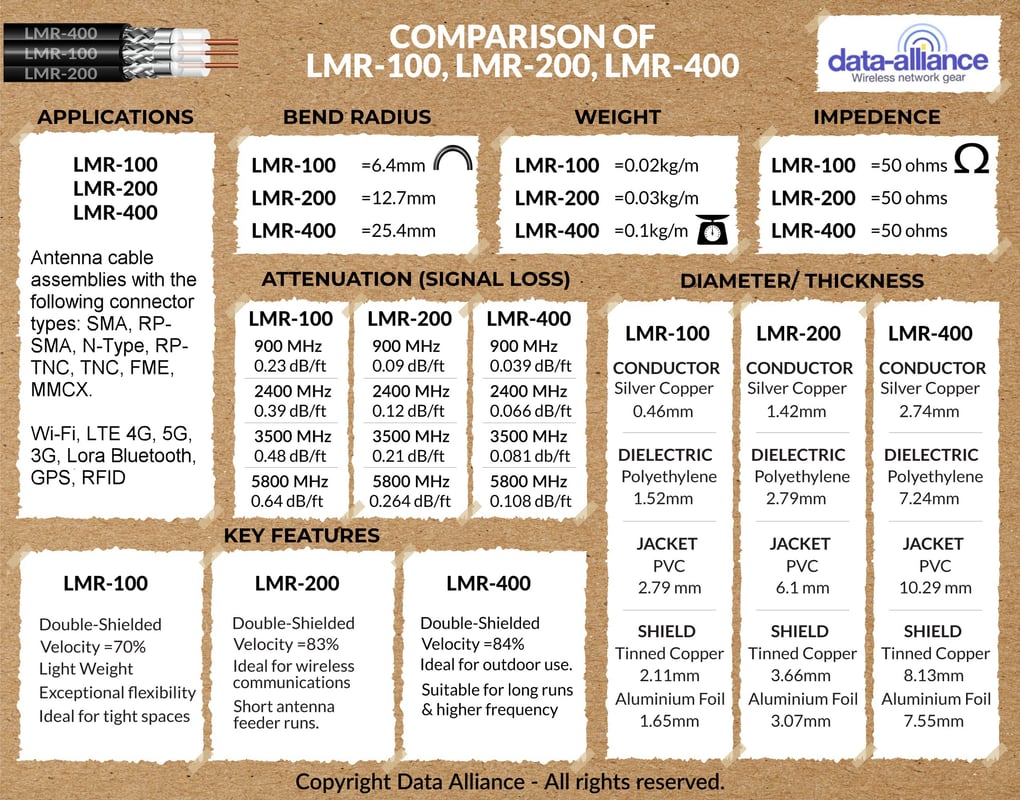
Other Specifications and Characteristics of Type-N to SMA cables
Physical specifications of the SMA connector
- Dimensions: the male connector has a diameter of 7⁄16 inches (11 mm) and the female connector has a diameter of 3⁄8 in (9.5 mm)
- Threading: 36 threads per inch
- Material: gold or nickel-plated machined brass with a Teflon insulator
- Male SMA connector: cylindrical body with internalized threads and outer hex-nut for tightening the mated connector with a wrench. Center pin conductor.
- Female SMA connector: cylindrical body with externalized threads, inner beryllium copper receptacle, and silicone rubber gasket
Electrical specifications of the SMA connector.
- Nominal impedance: 50 ohms
- Maximum frequency: up to 18 GHz
- Voltage rating: 500 volts.
- VSWR: 1.05 to 1.15 (depending on the attached coaxial cable)
- Contact resistance: 2.0 milliohms.
- Insertion resistance: 5000 megaohms.
- Radio frequency leakage: maximum of -90dB (at 2 to 3 GHz)
Mechanical characteristics of SMA connectors
- Mating: screw coupling tightened via male hex nut
- Vibration, moisture, and dustproof connection
- Mating cycles: 500+
SMA connector formats
- Right-angled SMA connectors
- Bulkhead SMA connectors
- PCB mounted SMA connectors
- Edge-mounted SMA connectors
- Panel-mounted with 2 or 4-hole flange SMA connectors
SMA extension cables
SMA connectors can be assembled with a variety of coaxial cable types to create extension cables for antennas and radio equipment. This can be undertaken as a DIY task, but purchasing pre-assembled SMA connector cable saves time and provides more reliable results and custom assemblies can be ordered if a specific configuration or length is required that is not readily available. They vary in gender and type of the connectors, body geometry, and the length and type of coaxial cable in the assembly.
Key Applications
When paired with the larger and more rugged N connector, these extension cables can bring connectivity to outdoor antenna installations. Applications of these cables include:
Frequently asked questions
How is an N-type connector attached to coaxial cable?
Making a reliable and secure N connector termination on coaxial cable requires the following tools and equipment:
- An N connector with the connector sleeve
- Coaxial cable
- Cable cutter
- Coaxial cable stripper
- Crimp tool
- Utility knife
- Heat shrink
- Firstly slip the heat shrink and connector sleeve onto the coaxial cable.
- Use the coax stripper to strip the outer jacket of the coax cable.
- Carefully peel back the wire braid of the coax to expose the inner dielectric, being careful not to unravel it.
- Cut away the dielectric, taking care not to damage the inner conducting wire. Use the connector as a guide to determine the amount of dielectric to be removed.
- Place the brass pin of the N connector over the connecting wire, ensuring that it fits snugly against the cut back dielectric (no more than 0.18 inches / 4.76mm should be exposed).
- Crimp the brass pin to the coax conducting wire while holding it in place. Check for a solid crimp.
- Place the connector body onto the cable, ensuring that the pin is in line with the connector’s face.
- Slide up the coax braid and connector sleeve over the connector. Trim off any excess braid.
- Crimp the connector sleeve to the connector.
- Cover the connector sleeve with the heat shrink and use the heat gun to shrink to size.
What is the best coaxial cable for the N connector?
Despite its large size, N connectors are a versatile partner for a range of coaxial cable types including:
Radio Guage (RG)
- RG58
- RG141
- RG142
- RG174
- RG178
- RG179
- RG188
- RG196
- RG214
- RG223
- RG316
LMR
- LMR195
- LMR240
- LMR400
- LMR600
The subminiature version A or SMA connector is a subminiature, semi-precision threaded radio frequency connector. It was originally a precision microwave connector for military applications in the 1960s but has become indispensable in cellular networking applications.

